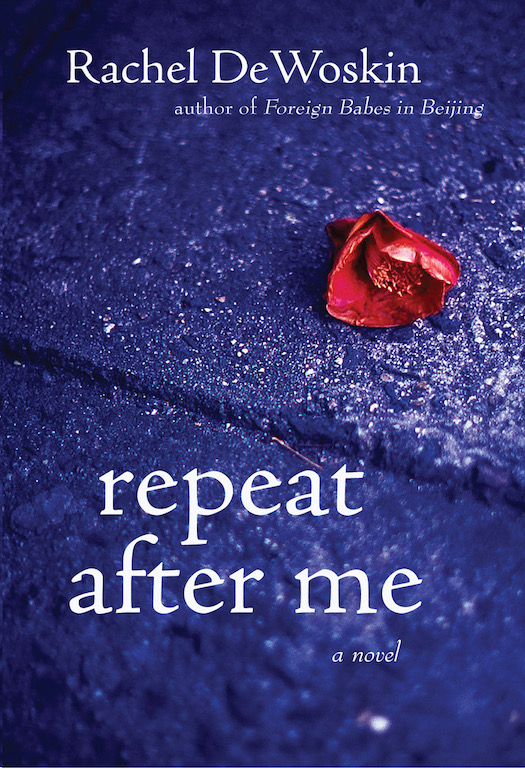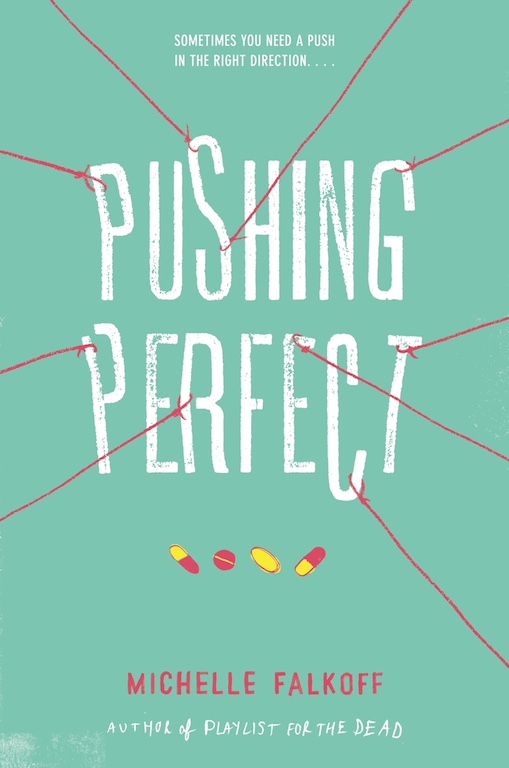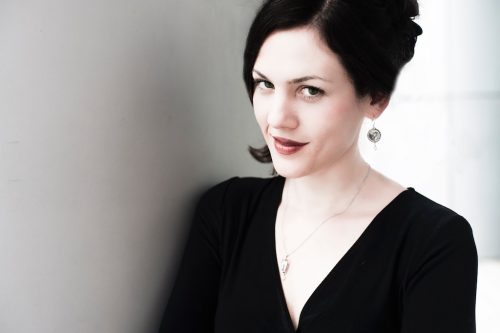
BY JUDY CARMACK BROSS
Their authors may be targeting teenagers, but half of the readers of young adult fiction are actually adults. With spellbinding heroes like Harry Potter, and heroines from Scout Finch in To Kill A Mockingbird to Katnis Everdeen in The Hunger Games, writers choosing this field have a bigger reach than most.
The third in our series on tips to encourage you to write that book that’s in your head, we talked to two very successful Chicago writers of young adult fiction—Rachel DeWoskin and Michelle Falkoff—along with Amy Brent Wexler, whose Brent Children’s Book Club reaches 3000 readers, and Eloise Geary, a young reader of this genre.

Rachel DeWoskin.
A member of the core fiction faculty at the University of Chicago and a New Yorker contributor, Rachel DeWoskin is the author of Someday We Will Fly (2019), Blind (2014), Big Girl Small (2011), Repeat After Me (2009), and Foreign Babes in Beijing (2005). She is an affiliated faculty member of the centers for East Asian Studies and Jewish Studies.
Rachel remembers early beginnings as a writer: “My mom used to joke that I would grow up to write card copy for Hallmark. I spent most of my childhood writing rhyming poems and my adolescence on angsty lyrics.”
“Curiosity and wonder drive my writing—I’m often in a frenzy of ‘hows’ and ‘what ifs,’ usually about girls and resilience. How do we get through our worst moments without becoming those moments or victims of them? How do we stand up for each other when it matters? What if my perspective were suddenly indelibly transformed, and I had to recalibrate my entire way of seeing and understating the world?
“I wrote Blind from of a series of questions I had about sight and insight; about how our points of view can shift, and what we do to accommodate those changes. I wrote Someday We Will Fly because I wanted to know how refugees keep their hope intact when it’s met by constant fear and dread, and what it means to let people land safety or to deny them at our borders.
“Conflict is a necessary fuel for dramatic action, and of course we get to know and care about characters by watching them make choices in difficult contexts. We also get to work out our own questions by way of inhabiting those characters’ lives—one of the great joys of reading and writing.”

Repeat After Me.
We asked Rachel what drew her to writing young adult fiction:
“I’ve always been interested in writing young adult characters since they spend so much time in moments of fascinating transformation—plus, their brains are exuberant, not calcified! I find my young adult readers to be intellectually open-minded, passionate about reading and working to understand the world. They’re connecting dots of meaning across subjects and cultures and languages, and I feel lucky to be in conversation with them.
“I also love and admire their willingness to look at difficult content and to ask straightforward questions, not just about books but also about their lives and the planet we’re leaving them.”

Michelle Falkoff.
Born and raised near Boston, Michelle Falkoff says she “pretty much spent her whole childhood reading” before leaving for the University of Pennsylvania to study literature. She attended Columbia Law School and went on to be an intellectual property litigator in Silicon Valley: “My weirdest case involved a battle over the patent for the variant of blue-green algae that makes farm-raised salmon turn pink when they eat it.”
She quit practicing law to study fiction at the University of Iowa Writers’ Workshop and ever since, she’s been teaching legal and fiction writing while writing novels. She serves as the director of the communication and legal reasoning program at Northwestern’s Pritzker School of Law and teaches fiction at the University of Chicago.
Michelle’s first two books are the young adult novels Playlist for the Dead, an NPR Great Read of 2015, and Pushing Perfect (2016), with “more to come in 2018 and beyond.”

Pushing Perfect.
She describes how she chose young adult fiction:
“I started out writing literary fiction, and I do still love it, but I found that my books tended to straddle genres. I cared about characters and sentences in the way literary writers do, but I also love mysteries, and sometimes I like to flirt with non-realism. It became really challenging for me to stay in the narrow genre confines that adult fiction tends to require these days.
“Young adult fiction, by contrast, is pretty flexible at the moment. That may change, but I’m hoping it doesn’t. There are some obvious genre distinctions, like science fiction and fantasy, but there’s also a lot of really wonderful blurriness. Right now, I’m writing what I would consider to be character-driven literary mysteries, and no one’s concerned about what shelf they’ll sit on.”
We asked our writers, along with industry stalwart Amy Brent Wexler and YA reader Eloise Geary to tell us a little bit more about the genre and what it means to them.
How does one go about getting their start writing YA novels?
Michelle: Read lots of young adult fiction first. The market is full of would-be YA writers who don’t understand the conversation they’re entering, and it can come across as disrespectful. There are wonderful books out there, and if that’s the field writers want to be in, they should make sure to learn as much about it as they can.
That said, it’s not uncommon to write a book that felt adult when it started but turned into YA. Lotx of us entered the field that way, so there’s nothing wrong with having to start our reading education later than others might have. It doesn’t absolve us of responsibility, though—there’s nothing more frustrating to me than writers who say they want to write YA but then are too disdainful of other people’s books to read it.
Amy: If you’re writing for young adults, don’t include situations and subject matter that is inappropriate for their ages. Be respectful of teens’ intelligence and struggles. Few periods of development are as painful as adolescence. More manuscripts get caught by a lack of clear definition than probably any other common error.
Eloise, we know you are an avid reader and love discovering the new worlds created through historical fiction. Tell us more about what you love to read.
I like characters who are independent and fun. My favorite stories have happy endings and often the character starts out low in the areas of school, sports, or friends but, by the end of the book, this has definitely improved.
Learning about life in other countries is also something I like.
Rachel, tell us a little bit more about incorporating other countries and cultures into your stories.
I spent much of my own childhood and most of my twenties in China, so my own imagination was shaped by a constant engagement with a culture and language that wasn’t my default. The difficulty and delight of living in someone else’s homeland gave me a sense of how vast the world is and the impression that my own cultural reference points weren’t necessarily universal.
It’s impossible to overstate how much that lesson—and the lesson of trying to read Chinese literature—matter to me as a person and a writer. Of course, it’s lovely to consider the possibility that my books give kids access to places and ideas they might not otherwise come upon.
The first real story I wrote was called “A Visit to the Chinese Market.” I wrote it when I was ten and had just returned from a summer in Taiwan. It was about an American girl in an unfamiliar context, feeling both giddy and afraid, and trying to find her footing. I’m still writing that story in all my books and not just for myself but also for my girls and the many brilliant young readers I’ve met along the way.

Foreign Babes in Beijing.
Are there similarities you all find between writing for young adults and writing for adults? Do you have typical readers?
Michelle: I don’t know that I have typical readers. My first two books were about kids who are somewhat like what my friends and I were like in high school: a little nerdy, perhaps overly focused on what came next rather than living in the moment, etc.
My most recent book is about a kid with no interest in college, who only lives in the moment, who never wants to leave his hometown, and who has to learn how to be curious. It’s possible the audiences are the same, or that there’s overlap, but it’s hard to know what books will speak to different kinds of readers.
I don’t go to seminars or anything like that; I base my knowledge on my experience and the experience of people I talk to, including teenagers. These days, lots of adults are reading YA, so their experiences are helpful and relevant as well.
Message-driven books, to me, read like medicine. I resisted them when I was a kid, and I’d imagine kids would resist them now. That doesn’t mean messages might not come out in the writing. There are definitely things I want to get across, but they’re not the primary function of the narrative, and often I discover them along the way.
Rachel: There are more similarities than differences. I have never been asked by an editor or anyone else on my team to change the content of any of my books for younger readers, and I write them exactly as I would write them for adults.
My young adult writing happens to be about young people and to be narrated from a close-in, urgent perspective, so it fits the requirements. I was an obsessive reader as a kid and had a sharp radar for anything pandering or that felt like it been tailored to suit my youth. I liked to read books that my mom also liked to read; we read together.
My YA books are written for kids and also for their parents and grandparents and teachers and librarians. I still read to both my girls, who are now 10 and 13. We read everything: both books written for their ages and books for adults. I think reading above your age range is an essential way to exercise your brain and the best possibility at inhabiting a magically wide range of experiences.
Read and dreamed and imagined experiences count as much as lived experiences, especially for anyone who wants to be an artist or writer. And reading about people who are unlike us is our best bet at widening our own perspectives and capacities for empathy.
What do you start with: the character, plot, period in history, or something contemporary?
Michelle: It really depends on the book. I write contemporary fiction, so that’s always a starting place, but I tend to come up with concepts and then attach them to people, rather than starting with people and then figuring out what’s going to happen to them. Perhaps that’s the real difference between me and literary fiction writers. Who knows? The writer Jim Crace often talked about his ideas as questions that he’d have to answer by writing the book, and I love that approach.
What about research?
Rachel: Research is one of the best parts of being a novelist. Sometimes my work allows me to land in other universes or live parallel lives in eras that ended hundreds of years ago. I’ve spent the last six summers exploring Shanghai, imagining the 1940s there for a young Jewish refugee who is as interested as she is scared, as scrappy and determined to survive as she is disoriented.
There are trees in the parks in Shanghai that have been there throughout, and some of the houses that were inhabited by Jewish refugees in the 1940s remain largely unchanged. That sort of research not only informs my books so that the stories feel meaningful and true, but it also gives depth to my life and my understanding of the world and other people’s books.
When I wrote Blind, I spent a year learning braille at the Chicago Lighthouse for the Blind. Learning to read again, in a new, quite, private way, was a beautiful experience.

Blind.
Michelle, does writing come easy for you? Do you have a set schedule for writing each day?
Writing definitely does not come easy and with a full-time job and some part-time jobs on the side, I haven’t yet found a way to be consistent. That said, when I have time to focus, I can work pretty quickly, and I’m trying to settle into a pattern of writing a new book every year-and-a-half to two years.

Two of Michelle’s books.
Rachel, you are on the core fiction faculty at the University of Chicago. Do you have students that are writing to that age group and what do you share about how to reach them?
My students write across the entire range: literary fiction, Southern gothic novels, novels in verse, speculative stories, lyrical essays, screenplays. When they’re writing for younger readers, the writing is usually about younger characters, and the stories often unfold almost in real time—not present tense, necessarily, but without hindsight from years later.
This kind of fiction has an immediacy and urgency that appeals to teenagers and also, I think, to adults who remember/long for the freshness of reading books as a teenager. My students are close to their own young reading lives and know how essential and life-changing books were for them, so they write with that kind of high bar in mind.
We celebrate Michelle and Rachel’s approach and know that they are making young adults lifelong lovers of reading. We hope you might consider this genre as well.
***
Next week we will report on two of Chicago’s finest non-fiction writers and their tips for breaking into the genre.






